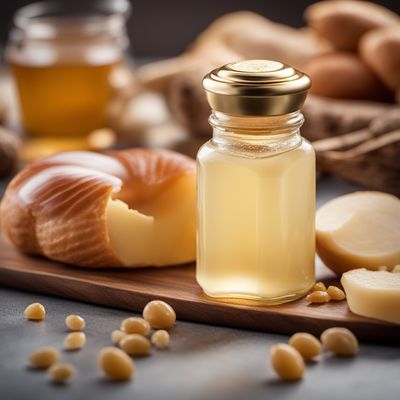
Ingredient
Chicken fat, processed
The Golden Elixir: Unveiling the Secrets of Processed Chicken Fat
Processed chicken fat, also known as schmaltz, is rendered chicken fat that has been clarified and filtered to remove impurities. It has a golden hue, a smooth and creamy texture, and a rich, savory flavor. This ingredient is prized for its ability to enhance the taste of various dishes, adding a luxurious mouthfeel and a distinct umami note. Its creamy consistency makes it easy to incorporate into recipes, whether as a cooking fat, a flavor enhancer, or a base for sauces and dressings.
Origins and history
Chicken fat has a long history in Jewish cuisine, where it is known as schmaltz. It originated in Eastern Europe and was traditionally used as a cooking fat and a flavoring agent. Over time, it spread to other culinary traditions and is now widely used in various cuisines around the world. Its popularity declined with the rise of vegetable oils, but it has recently experienced a resurgence as chefs and home cooks rediscover its unique qualities.
Nutritional information
Processed chicken fat is a concentrated source of calories, providing approximately 120 calories per tablespoon. It is primarily composed of saturated fats, but it also contains small amounts of monounsaturated fats. It does not contain any carbohydrates or protein.
Allergens
Processed chicken fat may contain traces of allergens, particularly if it is processed in facilities that handle other allergenic ingredients such as nuts or dairy. Individuals with allergies to chicken or poultry should exercise caution when consuming this ingredient.
How to select
When selecting processed chicken fat, look for a product that is clear, with a golden color and a smooth texture. Avoid any products that have a rancid or off-putting odor. Opt for reputable brands or sources that prioritize quality and transparency in their production processes.
Storage recommendations
Processed chicken fat should be stored in an airtight container in the refrigerator to maintain its freshness and quality. It can be kept for several months, but it is recommended to use it within three months for optimal flavor.
How to produce
While producing processed chicken fat at home can be time-consuming and requires careful rendering and clarification, amateur cooks can start by collecting chicken fat from roasted or cooked chicken. The fat can be melted over low heat, strained to remove impurities, and then clarified by gently simmering and skimming off any foam or solids that rise to the surface. The clarified fat can be further filtered and stored for future use.
Preparation tips
Processed chicken fat can be used as a cooking fat for sautéing, frying, or roasting, adding a rich flavor to dishes. It can also be used as a spread on bread or as a base for sauces, dressings, and gravies. When using it in recipes, start with small amounts and adjust to taste, as its flavor can be quite potent. Additionally, combining it with other fats, such as olive oil or butter, can help balance its intensity.
Culinary uses
Processed chicken fat is a versatile ingredient used in various culinary applications. It is commonly used in Jewish cuisine for dishes like matzo ball soup, chopped liver, and latkes. It can also be used to add richness to roasted vegetables, mashed potatoes, or sautéed mushrooms. Additionally, it can be incorporated into sauces, gravies, and dressings to enhance their flavor.
Availability
Processed chicken fat is commonly available in grocery stores and supermarkets, particularly in areas with a diverse culinary scene or a significant Jewish population. It can also be found in specialty food stores or online retailers.


